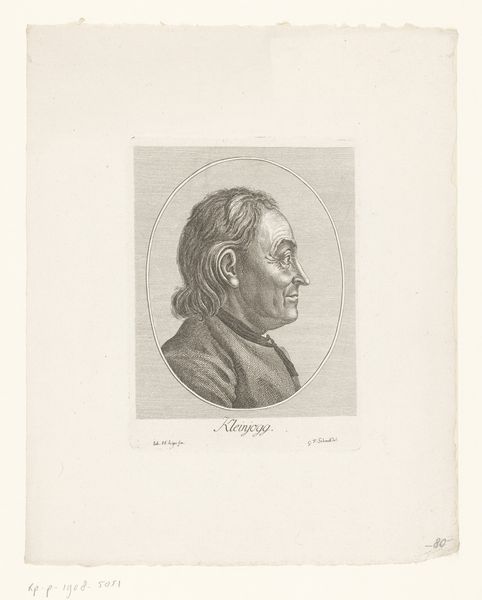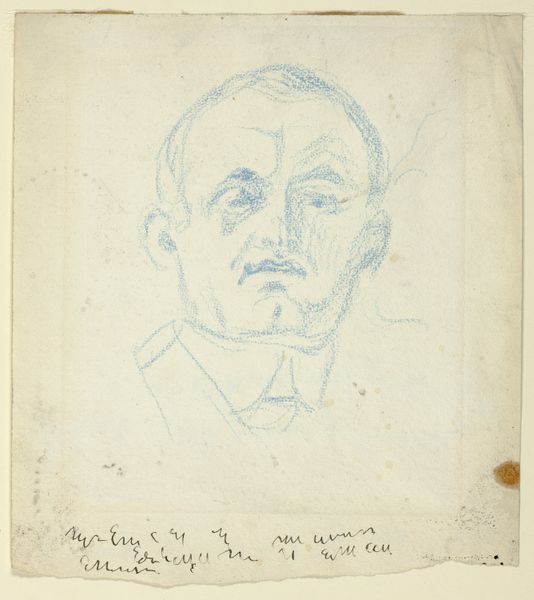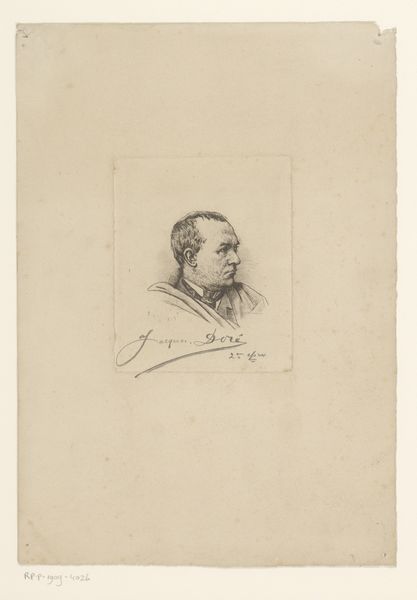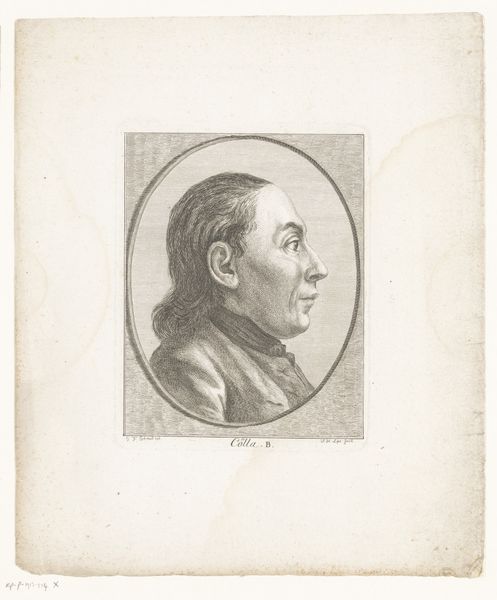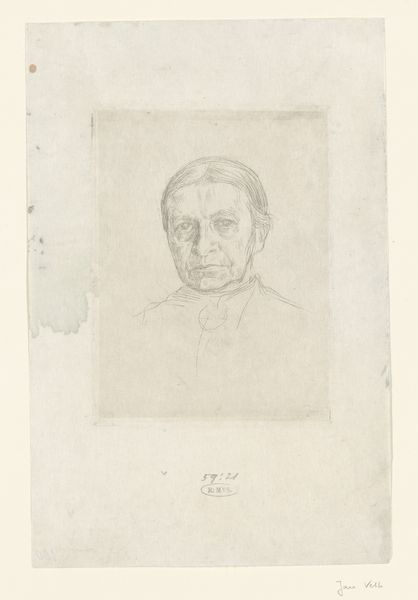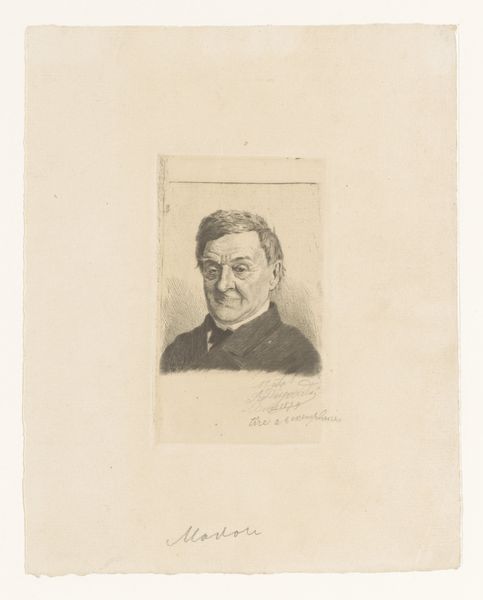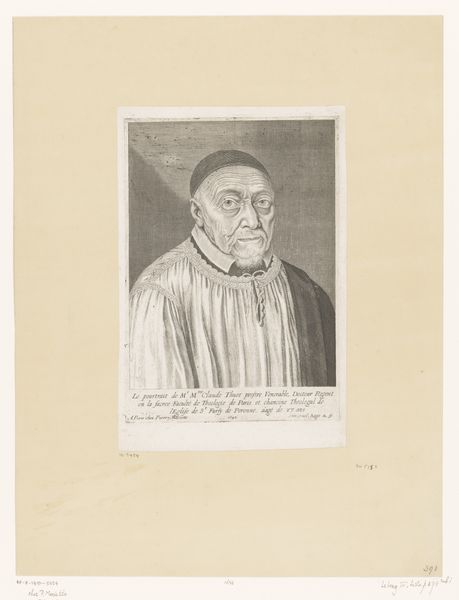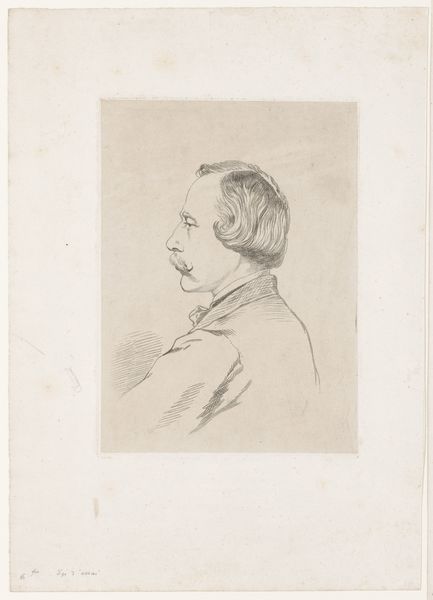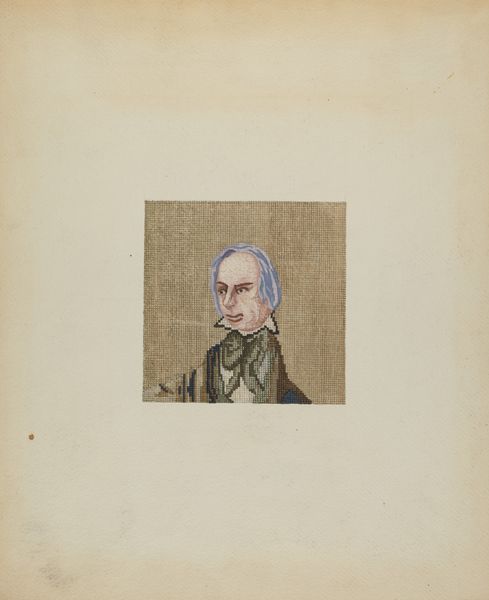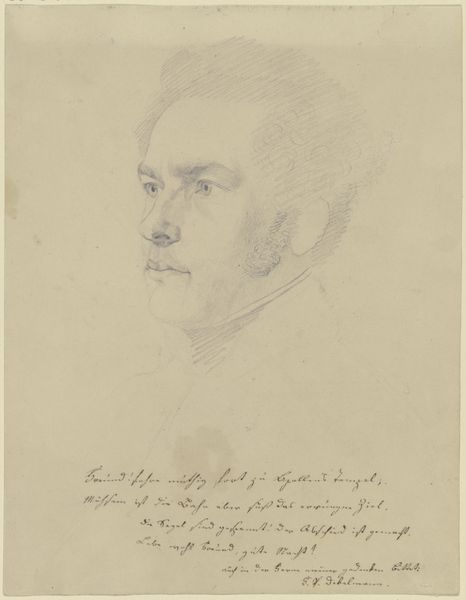
drawing, intaglio, dry-media, pencil
#
portrait
#
pencil drawn
#
drawing
#
aged paper
#
toned paper
#
light pencil work
#
intaglio
#
pencil sketch
#
old engraving style
#
dry-media
#
personal sketchbook
#
pencil drawing
#
pencil
#
sketchbook drawing
#
pencil work
#
realism
Dimensions: height 155 mm, width 97 mm
Copyright: Rijks Museum: Open Domain
This is an etching of an unknown woman made by Auguste Danse around 1873. The original image was created by incising lines into a metal plate, and then using this as a matrix for printing onto paper. Notice how the varying density of these etched lines creates the illusion of tone and shadow, giving depth to the woman's face and clothing. The process of etching and printing allows for the replication of images, fitting into a wider context of printmaking as both an artistic and commercial endeavour, which developed rapidly in the nineteenth century. This portrait is itself an intimate view of an ordinary person, rather than a grand historical figure, reflecting an emerging interest in the everyday. Consider how the skills required for etching and printing were often passed down through workshops and guilds, connecting art production to broader traditions of craft and labor. By understanding the materials and processes involved, we can appreciate how this artwork bridges the gap between fine art and the skilled trades.
Comments
No comments
Be the first to comment and join the conversation on the ultimate creative platform.

